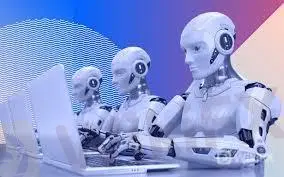Like many terms in retail investing, 'automated trading' covers a broad range of activities intended to make monitoring markets and executing trades faster and more efficient by outsourcing certain tasks to computer programs.
Basic automation might entail inputting a specific set of buy and sell parameters into your preferred trading software with a command to execute an order when those parameters are met. The sophistication of your automation largely depends on the complexity of your trading strategy and knowledge of programming, with more experienced traders adding increasingly narrow conditions and interlocking sets of commands.
Whether it’s a simple set of buy-sell price conditions or an elaborate combination of if-then commands, all automated trading relies on a computer program to perform each part of the trading process. Once you’ve input your order prerequisites, you’re free to step away from the screen while the faithful robot tirelessly scans the markets for opportunities, moving with lightning speed to act on your behalf when it spots a suitable trade.
As technology has evolved, automated trading has come to include other trading styles, such as algorithmic trading, social trading and copy trading.
Algorithmic Trading
Algorithmic trading allows traders handling large quantities of assets to manage trading costs by slicing orders that might otherwise be too large to execute efficiently under favourable conditions into smaller tranches.
Many traders use 'algorithmic trading' and 'automated trading' interchangeably, but they’re not quite the same. Traders can automate an algorithmic strategy to allow computers to handle each part of the transaction, including when to trade, however, the algorithm that gives the trading strategy its name only handles one component: the division of the order and its execution
Social and Copy Trading
Social trading and copy trading use specially created trading bots to send ‘signals’ to a trader when a particular investor places an order. A separate automation then mimics this order, in the case of copy trading, or simply observes and assesses if you’re a social trader.
Given its exceptional popularity, you might wonder just what makes automated trading so special.
For some traders, the practical benefits make it a better choice than self-managed strategies, leaving a trading bot to monitor the markets frees up valuable time for refining a strategy. Others like the idea of managing risk by simultaneously trading across multiple platforms. In general, however, the benefits of automated trading can be summarized as 'fast' and 'logical'.
Improved Trading Discipline
The same volatility that makes forex a profitable trading environment can wreak havoc on your trading strategy if you allow emotion to take over. Watching the markets rise and fall, glued to your screen and scanning frantically for an opportunity to enlarge your profits or mitigate your losses, you’re likely to trade impulsively and abandon your carefully-planned strategy. Or perhaps you can’t bring yourself to execute an order, even though every indicator says you’ll win the trade.
Because your participation in the trading process begins and ends with developing a strategy and instructing or creating a trading robot to act on your behalf, automated trading eliminates the risk that you’ll deviate from the best-laid plans due to anxiety or over-optimism.
More Refined Strategies
The only way to test a strategy with manual trading? Put your money in the market and track your progress over time in hopes of identifying patterns in your wins and losses. It’s an expensive and time-consuming learning process that requires you to consciously sit out opportunities that arise or hold tight during downturns, both of which are emotionally taxing.
Automated trading, on the other hand, offers the option to see how your trading rules would’ve performed against historical data. Backtesting not only offers you a risk-free opportunity to refine the rules you apply to your trades, it also makes it much easier to assess what’s working in your strategy and what’s not. Without the 'noise' of one-off trades you couldn’t help but execute and months, if not years, of historical market data to use as a testing ground, you have access to clear, actionable information without risk.
Risk Mitigation
Trading robots operating on multiple accounts, or even multiple platforms, can help you to control the inherent risk of trading in highly volatile markets in several ways. Without the need to constantly monitor markets and input orders yourself, you’re free to trade across several asset classes simultaneously, distributing risk as you see fit. Alternatively, you can assign different strategies to individual trading robots in the same asset class, ensuring that you’re always on the right side of a market trend.
Faster Order Execution
One of the first things novice traders learn is seconds count. The adage that time is money was never more accurate than in the context of trading forex, where entering or exiting a trade at the right millisecond can mean the difference between significant profits and just breaking even.
Automations react immediately to market conditions, moving to execute orders as soon as your desired preconditions are met. While the human brain needs to recognize those conditions, process them and then signal your body to take action, the trading bot not only opens your position seamlessly but generates the necessary orders to protect your investment or execute the trade. All in less time than it takes a human trader to blink.